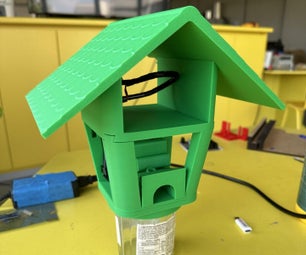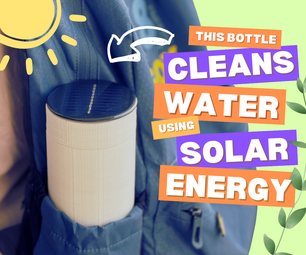Introduction: Ferric Chloride Agitator for Circuit Board Etching
When manufacturing circuit boards, the most popular method of removing the copper around the traces is ferric chloride etching. This process is slow, but can be sped up by agitating and heating the solution during the etching process. This instructable will show you how to build a contraption that will agitate the ferric chloride solution during the etching process. This contraption can be built out of scrap wood and parts commonly found at home. The below video will compliment this instructable and show a demonstration of the agitator working.
Step 1: What It Will Do
The ferric chloride agitator will have 2 wooden planks separated by roller bearings and held in place by rubber bands. There will also be a motor attached with an offset to the top plank. When the motor spins, the offset causes the whole contraption to vibrate. This vibration agitates the ferric chloride etching solution and speeds up the etching process.
Step 2: Materials
To build this project, you will need:
- Scrap particle board or plywood
- 3 roller ball bearings
- Rubber bands
- Wood Screws
- Nails
- Magnets
- Plastic container
- 6 volt motor(From printer)
- 5 volt power supply
Step 3: Tools
For this project, you will need a few common tools. You will need:
- A drill
- A Jigsaw
- A hot glue gun
- A screwdriver drill bit
- A 1/2 inch drill bit
- Wire strippers
- A pencil
- A straight edge.
Step 4: Cutting Out the Wood Boards
The wooden boards are the base structure for the whole agitator. First, the sizes need to be marked for cutting. The top wooden board needs to be about 1.5" larger (on all sides) than the plastic container used for the etching process. The bottom board needs to be about 2" larger (on all sides) than the top board. Also, a 1" wide length of wood needs to be marked out to hold the motor. After all of the boards are marked on the scrap plywood, they can be cut out with a jigsaw.
Step 5: Adding Roller Bearings
The roller bearings let the the top board slide freely about so it can vibrate and agitate the ferric chloride. The roller bearings are mounted to the bottom board in a triangular formation. They are bolted down with wood screws. Make sure that they are in the center of the board.
Step 6: Drilling Magnet Holes
The magnets hold the container of water and ferric chloride on top of the agitator contraption. They need to be flush with the wood in order to keep a strong hold on the container. To attach the magnets, use a half inch drill bit to drill 4 holes in the wood, about 1/8 inch down, in relation to the places on the plastic container that will be the closest to the board. Then, the magnets can be hot glued into their holes.
Step 7: Adding Vibrator Motor
The vibrator motor makes the agitator vibrate. First, take the motor(from a printer) and use 2 screws on each side to hold the motor to the small section of wood. Then, hot glue the wood to the top board with the axle of the motor facing up. After that, take a small section of wood(about 2") and drill a hole on the bottom of one end. Finally, put some hot glue in the hole and fit it onto the axle of the motor.
Step 8: Adding Suspension Mechanism
The suspension system of the agitator is made with nails and rubber bands. It holds the top board in place, yet allows it to move just enough to vibrate freely. It also makes the top board always spring back to the middle of the the bottom board. To add suspension; First, hammer a nail vertically into each corner of the top board. Next, hammer 4 nails into the bottom board pointing out at a 60 degree angle. Finally, set the top board on the bottom board and place rubber bands between the nails in the corners of the top board and the nails in the corners of the bottom board.
Step 9: Wiring the Motor
First, add some extra wire to the terminals of the motor. After that, add a screw to the bottom board to secure the the wire. Finally, attach the wires to the terminals on the power supply(polarities do not matter). The power supply can then be plugged into a surge protector. I used the surge protector as a switch.
Step 10: Testing!
The best way to use this agitator is to put one plastic container on top of the plate with the magnets. This container contains hot water to warm the ferric chloride solution. It also contains the magnets that let it stick to the wood board. Then, inside the water container, place a separate container that contains the ferric chloride and the circuit board. Finally, seal the ferric chloride container and turn on the agitator. The etching process should happen in a shorter amount of time now.
Good luck building!

Participated in the
Automation Contest 2016











